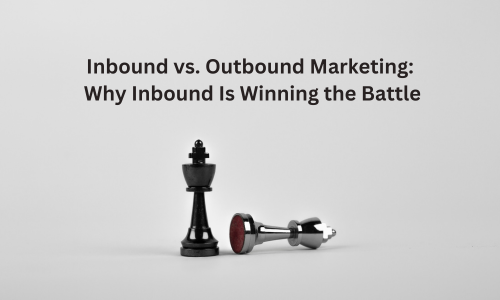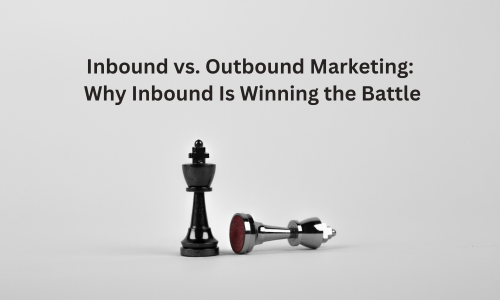


In today’s rapidly evolving marketing landscape, businesses are constantly seeking strategies that not only reach potential customers effectively, but also resonate with their needs and preferences. As companies debate the merits of various approaches, inbound marketing has emerged as a clear winner over its traditional counterpart, outbound marketing. But what exactly is driving this shift, and why is inbound marketing taking the lead? Let’s dive into the differences between inbound and outbound marketing, explore why inbound is winning the battle, and offer some insights into how you can leverage these strategies to your advantage.
Before delving into the reasons behind inbound marketing's rise, it’s crucial to understand the distinctions between inbound and outbound marketing.
Inbound Marketing is all about attracting customers through valuable content and experiences that address their needs and interests. It focuses on drawing potential leads in rather than pushing messages out. Common techniques include:
In contrast, Outbound Marketing refers to traditional marketing methods that push messages out to a broad audience, often with less focus on targeting individual interests. Typical outbound techniques include:
Several factors are contributing to the increasing dominance of inbound marketing over outbound methods:
1. Changes in Consumer Behaviour
Modern consumers have become more empowered and informed. With the internet at their fingertips, they can research products, compare options, and read reviews before making purchasing decisions. This shift has made traditional outbound methods, which often rely on interruptive advertising, less effective. Inbound marketing, on the other hand, aligns with the modern consumer’s preference for seeking out information and engaging with brands on their own terms.
2. Cost-Effectiveness
Inbound marketing is often more cost-effective than outbound marketing. While traditional advertising can be expensive and may not always guarantee a return on investment, inbound strategies such as content creation and SEO typically involve lower costs and can deliver long-term benefits. High-quality content and well-optimized SEO efforts continue to attract and convert leads over time, providing a more sustainable and economical approach.
3. Enhanced Personalization and Targeting
One of the key advantages of inbound marketing is its ability to offer personalized experiences. By analysing user behaviour and preferences, inbound strategies can tailor content and interactions to meet the specific needs of individual users. This level of personalization increases engagement and conversion rates, as potential customers receive relevant information that speaks directly to their interests and pain points.
4. Higher Engagement and Conversion Rates
Inbound marketing often results in higher engagement rates compared to outbound methods. Content that addresses the audience’s needs and interests encourages interaction and fosters trust. This trust-building process is crucial for converting leads into customers. In contrast, outbound methods can sometimes feel intrusive and less engaging, leading to lower conversion rates.
While inbound marketing offers numerous advantages, it’s not without its challenges:
To maximize the effectiveness of your inbound marketing efforts, consider the following best practices:
The battle between inbound and outbound marketing is increasingly favouring inbound strategies due to their alignment with modern consumer behaviour, cost-effectiveness, and ability to deliver personalized experiences. As businesses continue to adapt to the digital age, embracing inbound marketing approaches can offer a more sustainable and impactful way to engage with customers and drive growth.
Whether you’re new to inbound marketing or looking to enhance your current efforts, understanding these dynamics and implementing best practices can help you stay ahead in the ever-evolving marketing landscape. So, take a closer look at your marketing strategy and consider how inbound marketing can elevate your business to new heights.
Disclaimer: This article is provided for informational purposes only. It is not offered or intended to be used as legal, tax, investment, financial, or other advice.
